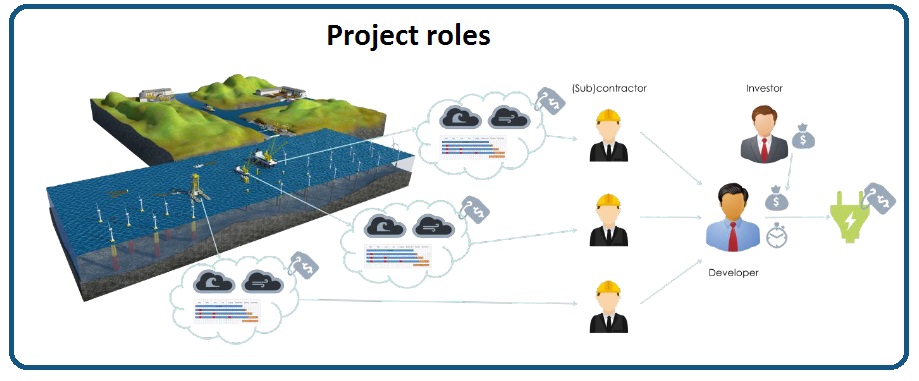Weather risks in offshore wind projects can significantly delay project planning because it impacts almost all operations. And this risk continues to complicate installation operations because projects tend to move further offshore into deeper waters, requiring longer cycle times. The lack of understanding by contractors on how to take weather risks into account in project planning, as well as the large number of interfaces in installation projects due to different contracts and sub contracts, make installation project planning today extremely volatile. This translates itself into long potential project delays and substantial higher cost in the project. Without understanding the weather risk, creating a reliable financial analysis on a project is difficult, because first power dates and the cost of installation are hard to predict.
Subsequently this leads to higher cost of financing and project cost in general. It is impossible to predict the weather behavior during installation operations in an early stage. However the expected impact of weather in the project can be analyzed using specific technologies, resulting in reliable risk information for project planning. To understand the risk of weather for the complete installation project, an integrated approach on the weather risk is required including all relevant subcontracts that impact the total project throughput. For example the weather delays on substructure installation operations will impact the installation of towers, which will then impact the installation of turbines.

Based on analysis results, contractors and developers can design contingency strategies for different weather scenarios ensuring their teams can anticipate to guarantee project progress.
This integrated analysis can be applied using a developed standardized method in which contractors can analyze individual performance with regard to weather. The method uses raw hind cast met-ocean data in combination with operational parameters and thresholds to analyze the expected completion date of the contract. Instead of having one single completion date, the system generates a bandwidth in which project completion will be expected, because the exact weather pattern cannot be forecasted. Having this information provides useful weather risk information on the project progress. By using the information, subsequent installation operations as well as other contracts can be analyzed resulting in integrated project planning. The weather risk information format is standardized enabling subsequent contractors to quickly use this information as a starting point for individual analysis.
Based on the results, contractors and developers can design contingency strategies for different weather scenarios ensuring their teams can anticipate to guarantee project progress. This results in reliable integrated project planning with a sound understanding of weather risks in relation to contract interfaces in the project. Understanding the weather risk will enable contractors to actively manage the risk rather than accepting it in return for a fixed price. This leads to a reduction of the overall project cost and eventually drives down cost of wind energy.
Systems Navigator
www.systemsnavigator.com
Filed Under: Financing, News




